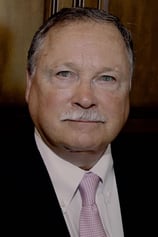This is my 4th blog article on the subject of cap rates and commercial loans, and its a good one! Today you will learn how appraisers and commercial brokers (commercial realtors) compute a cap rate. Then you will learn how to appraise or value a commercial property using a cap rate.
A Pro Forma Operating Statement is a projected budget for a commercial property for the upcoming year. A pro forma sets aside a reserve for vacancy and collection loss and a reserve for replacements (new roof, new HVAC unit, etc.). It also budgets for outside management, even if the owner currently manages the property. The bottom line of the pro forma is the commercial property's projected Net Operating Income (NOI). We will use the NOI a lot in this article.
When an appraiser wants to figure out the cap rates at which nearby commercial properties are selling, he starts first by by gathering up the offering memorandums on recently sold commercial properties. By the way, an Offering Memorandum is a sales brochure, prepared by the listing real estate broker, that describes the commercial property that is for sale, includes color pictures, and contains a pro forma operating statement on the property. Please be sure to look at the sample offering memorandum.
From the offering memorandum, the appraiser gathers the Net Operating Income number. Using the NOI and the actual sales price, the appraiser can quickly compute the cap rate.
How exactly does he do this? Well, let's look at the definition of cap rate.
Cap Rate = (NOI / Purchase Price) x 100%
For this example, let's assume that the appraiser looked at the original offering memorandum of a recently-sold 8-unit apartment project and plucked off the number, $48,619, as the NOI. The building eventually sold for $1,055,000. Let's plug, chug, and then compute our cap rate:
Cap Rate = ($48,619 / $1,055,000) x 100%
Cap Rate = .046 x 100%
Cap Rate = 4.6%
In other words, if an investor purchased this 8-plex for $1,055,000 all-cash, and if he hired a professional management company to run the property, the investor would earn an annual return (think of it like "interest") of 4.6%. This is a fairly low cap rate, but apartments are a very desirable form of income property, and this particular 8-plex was located in a densely-populated, high-demand area of Sacramento.
Okay, now let's look at a different property. Suppose you're the appraiser or a commercial real estate broker. You have looked at the numbers on a dozen nearby commercial properties that have sold recently and which are comparable to the retail building (lets say a dollar discount store) that you are trying to value today. You have computed the cap rates on these dozen sales, and you have determined that small, free-standing retail buildings in this area sell for a cap rate of around 9.25%.
You have also looked at the lease and the historical operating expenses for this dollar discount store building, and using those numbers, you have prepared a pro forma operating statement. You have computed the projected NOI to be $32,500 per year.
Now here comes your biggest nightmare. Do you remember when your high school algebra teacher once said, "You're going to have to learn this stuff. You will need to use algebra someday in business." Well, folks, unfortunately today is that day; but I promise to go slow and to use baby language. And please don't panic! When I'm done, I am going to give you a simple formula that you can memorize to figure out the value of a commercial property.
Now let's first key our eyes on the target. We are trying to value a little free-standing retail building that is currently leased to a dollar store. We know the property's NOI, which we computed to be $32,500 per year. We know at what cap rate comparable commercial properties are selling - 9.25%. So how do we use what we know to compute the property's value? Let's start with the definition of a cap rate.
Cap Rate = (NOI / Purchase Price) x 100%
In order to solve for Purchase Price (Value), we have to rearrange the equation to where we have "Purchase Price is equal to" on one side of the equation. Therefore we are going to have to move some terms around to isolate Purchase Price on one side of the equal-to-sign.
Now, remember, in algebra we can do anything we want to one side of the equal-to-sign, as long as we do the same thing to the other side. Let's start by multiplying each side of the equation by Purchase Price.
Purchase Price x Cap Rate = (NOI / Purchase Price) x Purchase Price x 100%
What is seven divided by seven (7/7)? One, right? What is (9.2 / 9.2)? One, right? What is (Purchase Price / Purchase Price)? One! So now let's rewrite this equation:
Purchase Price x Cap Rate = NOI x 100% x (Purchase Price / Purchase Price)
Purchase Price x Cap Rate = NOI x 100% x 1
Purchase Price x Cap Rate = NOI x 100%
We are trying to isolate Purchase Price on one side of the equal-to-sign, so now let's divide both sides of the equation by Cap Rate.
Purchase Price x (Cap Rate / Cap Rate) = (NOI x100%) / Cap Rate
Purchase Price x 1 = (NOI / Cap Rate) x 100%
Purchase Price* = (NOI / Cap Rate) x 100%
*Another name for Value.
This formula in red is the one you can simply memorize. You take the property's NOI and divide it by the Cap Rate (expressed as a decimal; i.e., 0.072 rather than 7.2%).
Okay, we're now ready to plug and chug. In this example we assumed that the proeprty's Net Operating Income (NOI) was $32,500 per year. We also determined that comparable commercial properties nearby were selling at a 9.25% cap rate (0.0925 if expressed as a decimal).
Value = NOI / Cap Rate**
** Please note that we had substituted Value for Purchase Price and that in this formula we have to remember to express the Cap Rate as a decimal.
Value = NOI / Cap Rate
Value = $32,500 / 0.0925
Value = $351,351 or rounded to $351,000
Forget about the torturous algebra! Just remember to divide the Net Operating Income by the Cap Rate (expressed as a decimal) to figure out the value of the property.
This is such an important tool that we are going to do one more example. The subject property is an office tower in Indianapolis generating $2,324,000 per year in net operating income. Similar office towers downtown are selling at 6.75% cap rates.
Value = NOI / Cap Rate
Value = $2,324,000 / 0.0675*
Value = $34,429,629 rounded to, say, $34,430,000
* Would you have remembered to convert the cap rate to a decimal format?
Congratulations! You now know how to value a commercial property, even one that is located in Bum Flowers, Egypt. :-)
By the way, if you enjoyed this article, and you are not already subscribed to my blog, please find my rump-ugly picture above and fill in your email address. I am in the process of training my two sons, before I keel over and die, and you can therefore get trained in commercial real estate finance for free.
Also, some Facebook likes or Google-Plus +1's would make my old, weary heart a little happier. I know, its disgusting when an old man begs.
Joke Du Jour: So there I was, sitting at the bar staring at my drink when a large, trouble-making biker steps up next to me, grabs my drink and gulps it down in one swig. "Well, whatcha' gonna do about it?" he says menacingly, as I burst into tears. "Come on, man," the biker says, "I didn't think you'd CRY. I can't stand to see a man crying."
"This is the worst day of my life," I say. "I'm a complete failure. I was late to a meeting and my boss fired me. When I went to the parking lot, I found my car had been stolen, and I don't have any insurance. I left my wallet in the cab I took home, where I found my wife with another man. Then my dog bit me."
"So I came to this bar to work up the courage to put an end to it all. I buy a drink, I drop a capsule in it, and I sit here watching the poison dissolve. Then you show up and drink the whole thing! But hey, enough about me, how's your day going?"







 A credit company has a such a superb repuation for managing credit that it can walk up to the bond market and simply shout out, "Who wants to loan us money on an
A credit company has a such a superb repuation for managing credit that it can walk up to the bond market and simply shout out, "Who wants to loan us money on an  Not every investor will be satisfied with the same Cap Rate. Let's go back to the above example, and now let's assume that a wealthy business owner is leasing one of the six office suites in the building. In addition to partially-occupying the building, this wealthy business owner lives just five minutes away. He likes the short commute, and he fears that he might someday be forced to move. When he hears that the office building has been listed for sale and that an offer to buy the property has already been made, the wealthy business owner submits a competing offer for $740,000.
Not every investor will be satisfied with the same Cap Rate. Let's go back to the above example, and now let's assume that a wealthy business owner is leasing one of the six office suites in the building. In addition to partially-occupying the building, this wealthy business owner lives just five minutes away. He likes the short commute, and he fears that he might someday be forced to move. When he hears that the office building has been listed for sale and that an offer to buy the property has already been made, the wealthy business owner submits a competing offer for $740,000.
 This is the first in a new series of articles on cap rates. If you are going to invest in commercial real estate, or if you are going to work as a commercial loan broker, you simply must be very comfortable with cap rates. Watch me make this an easy subject:
This is the first in a new series of articles on cap rates. If you are going to invest in commercial real estate, or if you are going to work as a commercial loan broker, you simply must be very comfortable with cap rates. Watch me make this an easy subject: For example, let's suppose a commercial property - we'll call it Property 1 - generates $50,000 per year in net rental income. If its an average-looking office building in a middle-income neighborhood, and the tenant is of average quality, most investors might need a cap rate (remember, think of a cap rate just like an interest rate) of around 8% before they would buy the property. Fifty thousand dollars divided by an 8% cap rate produces a likely sales price of around $625,000.
For example, let's suppose a commercial property - we'll call it Property 1 - generates $50,000 per year in net rental income. If its an average-looking office building in a middle-income neighborhood, and the tenant is of average quality, most investors might need a cap rate (remember, think of a cap rate just like an interest rate) of around 8% before they would buy the property. Fifty thousand dollars divided by an 8% cap rate produces a likely sales price of around $625,000.
